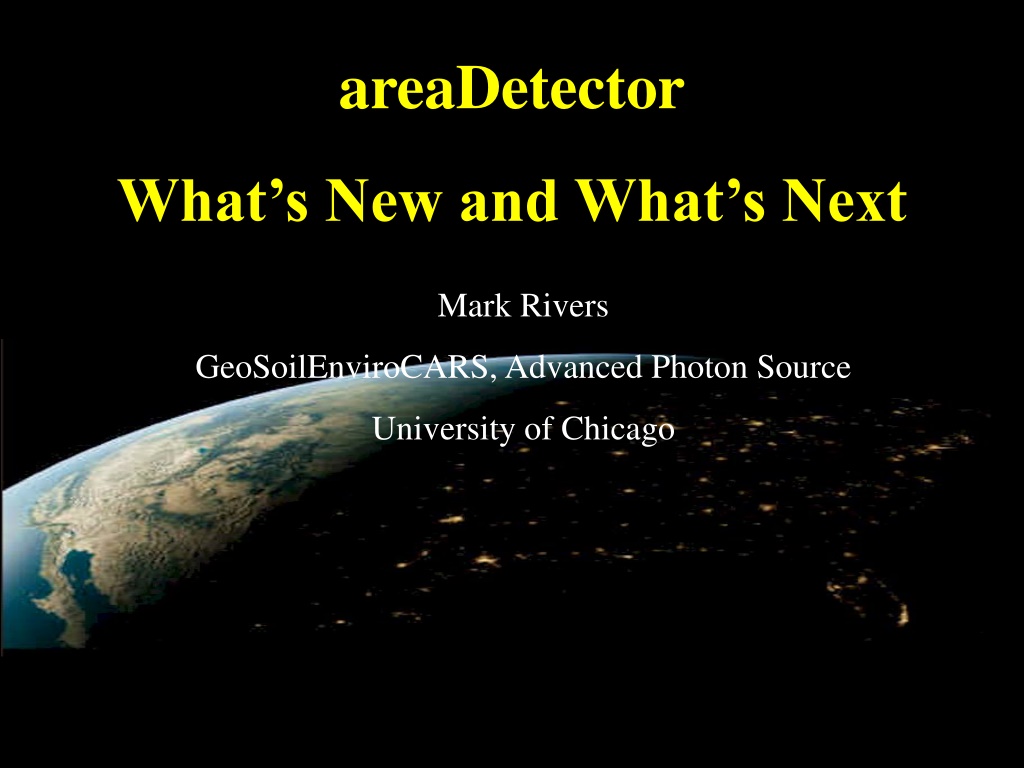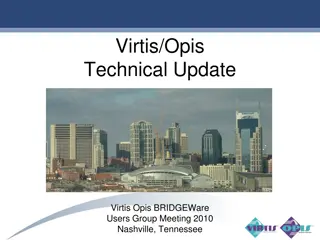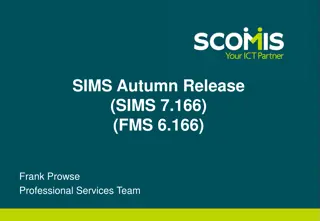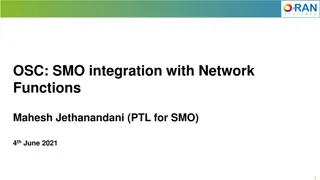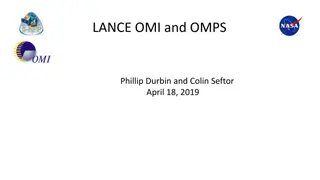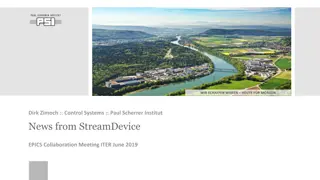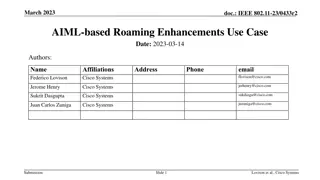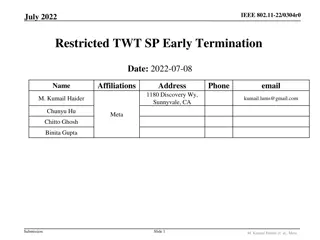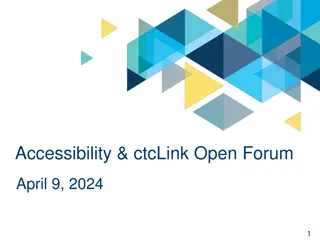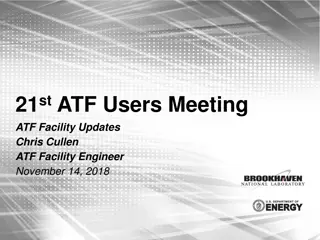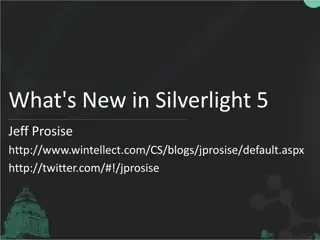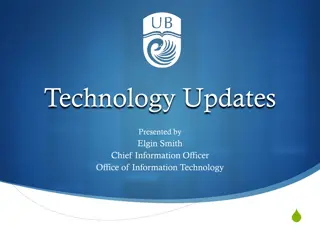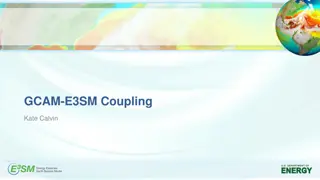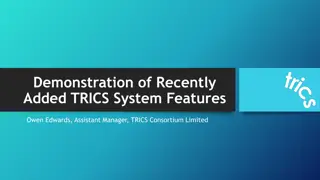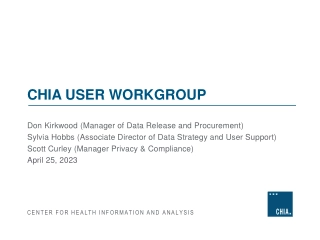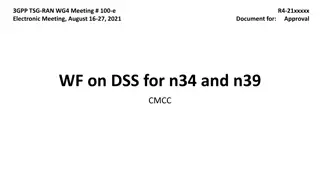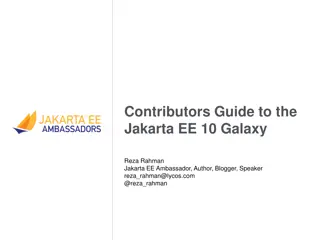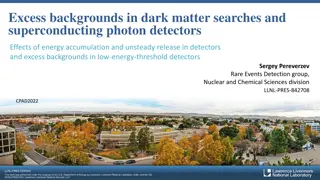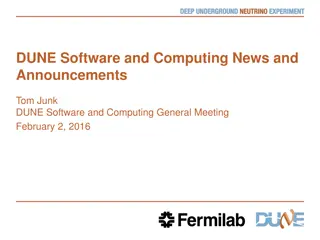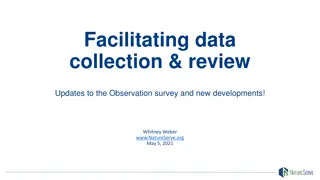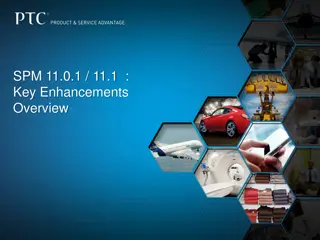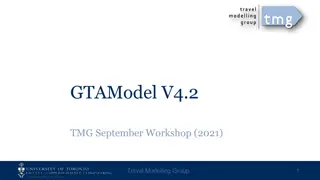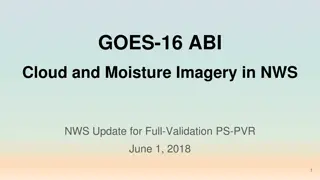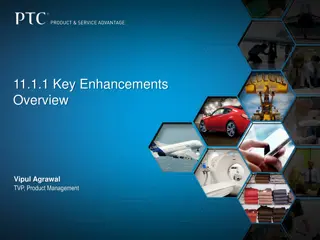Latest Updates on areaDetector: Releases, Features, and Enhancements
The latest developments in areaDetector by Mark Rivers at the University of Chicago include updates on releases, major features in versions 3-2 and 3-3, as well as upcoming plans for versions 4-0 and 5-0. Key points cover EPICS_NTNDA_Viewer for ImageJ plugin, advantages of NTNDArray data transmission, NDArrayPool design enhancements, and active plugin counting improvements. These advancements aim to enhance performance and functionality in data acquisition and handling processes.
Download Presentation

Please find below an Image/Link to download the presentation.
The content on the website is provided AS IS for your information and personal use only. It may not be sold, licensed, or shared on other websites without obtaining consent from the author. Download presentation by click this link. If you encounter any issues during the download, it is possible that the publisher has removed the file from their server.
E N D
Presentation Transcript
areaDetector What s New and What s Next Mark Rivers GeoSoilEnviroCARS, Advanced Photon Source University of Chicago
Outline Last update was October 2017 at ITER and ICALEPCS in Barcelona areaDetector and ADCore Releases since then: R3-2, R3-3 (soon) Brief recap of the top items from R3-0 for those who missed it Major new features in 3-2 and 3-3 Roadmap for R4-0 and R5-0
EPICS_NTNDA_Viewer ImageJ plugin (ADViewers R1-0) New ImageJ plugin written by Tim Madden and Marty Kraimer Essentially identical to EPICS_AD_Viewer.java except that it displays NTNDArrays from the NDPluginPva plugin, i.e. using pvAccess to transport the images rather than NDPluginStdArrays which uses Channel Access.
EPICS_NTNDA_Viewer Advantages NTNDArray data transmitted "atomically" over the network With Channel Access size and data type of waveform record is fixed at iocInit, cannot be changed at runtime. To view both 8-bit and 64-bit double FFT images waveform record needs to be 64-bit double, 8X network overhead for 8-bit. pvAccess changes the data type of the NTNDArrays dynamically at run-time. Channel Access requires setting EPICS_CA_MAX_ARRAY_BYTES, considerable confusion and frustration for users. NDPluginPva is 5X-10X faster than NDPluginStdArrays ImageJ is 1.5-2X faster with pvAccess than with Channel Access.
NDArrayPool Design Enhancements (R3-3) Previously each plugin used its own NDArrayPool. Problem: not really possible to enforce the maxMemory limits for the driver and plugin chain. Sum of the memory use by the driver and all plugins that matters, not the use by each individual driver and plugin. NDPluginDriver base class changed to set its pNDArrayPool pointer to the address passed to it in the NDArray.pNDArrayPool for the NDArray in the callback. Ultimately all NDArrays are derived from the driver, either directly, or via the NDArrayPool.copy() or NDArrayPool.convert() methods. Thus plugins now allocate NDArrays from the driver's NDArrayPool, not their own.
Active Plugin Counting and Waiting for Plugins to Complete (R3-3) Previously to wait for plugins to complete before the driver indicated that acquisition was complete then needed to set CallbacksBlock=Yes for each plugin in the chain. Waiting for plugins is needed in cases like the following Doing a step scan and one of the counters for the step-scan is a PV from the statistics plugin. Necessary to wait for the statistics plugin to complete to be sure the PV value is for current NDArray and not the previous one. Doing a scan and writing the NDArrays to a file with one of the file plugins. N Necessary to wait for the file plugin to complete before changing the file name for the next point. Problems with setting CallbacksBlock=Yes. Slows down the driver because the plugin is executing in the driver thread and not in its own thread. Complicated to change all of the required plugin settings from CallbacksBlock=No to CallbacksBlock=Yes.
Active Plugin Counting and Waiting for Plugins to Complete NDPluginDriver base class now does the following: Increments a NumActivePlugins counter in the driver that owns each NDArray as it is queued Decrements the counter after the processing is done. All drivers have 3 new records: NumActivePlugins: Indicates the total number of NDArrays that are currently processing or are queued for processing by this driver. WaitForPlugins: Determines whether AcquireBusy waits for NumActivePlugins to go to 0 before changing to 0 when acquisition completes. AcquireBusy: busy record that is set to 1 when Acquire changes to 1. It changes back to 0 when acquisition completes, i.e. when Acquire_RBV=0. If WaitForPlugins is Yes then it also waits for NumActivePlugins to go to 0 before changing to 0. Should now rarely be necessary to change plugins to use CallbacksBlock=Yes.
NDFileTIFF (R3-3) Added support for readFile() so it is now possible to read a TIFF file into an NDArray using this plugin and do callbacks to downstream plugins. All datatypes (NDDataType_t) are supported. Supports Mono, RGB1, and RGB3 color modes. It also correctly reads files written with RGB2 color mode. Sestores the NDArray fields uniqueID, timeStamp, and epicsTS if they are present. Restores all of the NDArray NDAttributes that were written to the TIFF file. Because of the way the NDAttributes are stored in the TIFF file the restored attributes are all of type NDAttrString, rather than the numeric data types the attributes may have originally used. One motivation is for NDPluginProcess to be able to read TIFF files for the background and flat field images, rather than needing to collect them each time it is used.
NDPluginProcess (R3-3) Load a dedicated TIFF plugin for the NDPluginProcess plugin in commonPlugins.cmd. Used for reading background or flatfield TIFF files. Add an sseq record to load the background image from a TIFF file. Executes all the following steps: 1. Saves the current NDArrayPort fo the Process plugin to a temporary location 2. Sets the NDArrayPort to the TIFF plugin. 3. Enables ArrayCallbacks for the TIFF plugin in case they were disabled. 4. Process the ReadFile record in the TIFF plugin. This reads the TIFF file and does callback to the Process plugin. 5. Loads the NDArray from the callback into the background image. 6. Restores the previous NDArrayPort from the temporary location. Add an sseq record to load the flatfile from a TIFF file. Executes the same steps as for the background above, except that in step 5 it loads the NDArray into the flatfile image.
NDPluginProcess (R3-3) New records
NDFileHDF5 (R3-2) Added support for blosc compression library. Compressors include blosclz, lz4, lz4hc, snappy, zlib, and zstd. Also support for ByteSuffle and BitShuffle. ADSupport now contains the blosc library, so it is available for most architectures. The build flags WITH_BLOSC, BLOSC_EXTERNAL, and BLOSC_LIB have been added, similar to other optional libraries. Thanks to Xiaoqiang Wang for this addition. Changed all output records in NDFileHDF.template to have PINI=YES. This is how other plugins all work.
Operator displays medm, edm, caQtDM, CSS-BOY (R3-2) Added ADApp/op/Makefile. Runs the conversion tools to convert the medm adl files to edl for edm, ui for caQtDM, and opi for CSS-BOY. Lightning talk on this later today. medm CSS-BOY
Other Changes (R3-3) NDArrayPool Enhancements Changes to allow inheriting it from derived classes. Thanks to Sinesa Veseli for this. Optimization to memory allocation mechanism. Original work by Michael Huth. I am currently modifying to use std::multiset, same as used for plugin output sorting. ntndArrayConverter.cpp Added conversion of the NDArray.timeStamp and NDArray.epicsTS fields from EPICS epoch (Jan. 1 1990) to Posix epoch (Jan. 1, 1970). Needed because NDArrays use EPICS epoch but pvAccess uses Posix epoch and the timestamps shown by pvGet were incorrect for the NTNDArrays.
Point Grey 10-Gbit Ethernet Camera Oryx ORX-10G-51S5C-C 2448 x 2048 global shutter CMOS Sony IMX250 2/3 Dynamic range of 72 dB Peak QE of 62% Read noise of 2.2e- 12-bit, 10-bit, or 8-bit data Max frame rate of 162 fps 779 MB/S, >8X faster than GigE $1,875
ADSpinnaker New driver for Point Grey GeniCAM cameras using their Spinnaker SDK (10 GigE, GigE, USB-3) Currently working on Windows Linux requires Ubuntu 16 (gcc 5.4, special release of ffmpeg) Some work beginning on aravisGigE driver Guabao Shen at APS and Neil O Brien at Diamond)
Roadmap: ADCore R4-0 ?? Put more functionality into ADDriver base class Derived class would call ADDriver::doPluginCallbacks(), which would handle setting attributes, getting timestamp, calling plugins, etc. Simplify file saving modes (no more Single, Capture, Stream) and eliminate AutoSave Add flag to prevent overwriting files Support compression in NDArrays
Roadmap: ADCore R5-0 ?? Change NDArray to NTNDArray for passing data to plugins Use PVDatabase local provider within IOC pva provider between IOCs Smart pointers automatically eliminate all unnecessary copying Eliminates need for NDPluginPva V4 clients can immediately receive data from any point in plugin chain Distribute load to multiple IOCs without pvaDriver Bruno Martins has demonstrated this working for ADSimDetector and NDPluginStats
